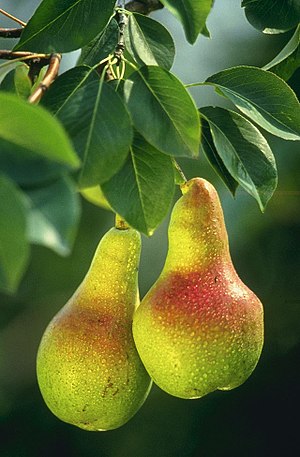Difference between revisions of "Pyrus communis"
Jump to navigation
Jump to search
(cut down) |
|||
| (One intermediate revision by the same user not shown) | |||
| Line 14: | Line 14: | ||
}} | }} | ||
| − | + | Common European pear. | |
| − | + | {{Ack-Wikipedia}} | |
| − | |||
| − | |||
| − | |||
| − | |||
| − | |||
| − | |||
| − | |||
| − | |||
| − | |||
| − | |||
| − | |||
| − | |||
| − | |||
| − | |||
| − | |||
| − | |||
| − | |||
| − | |||
| − | |||
| − | |||
| − | |||
| − | |||
| − | |||
| − | |||
| − | |||
| − | |||
| − | |||
| − | |||
| − | |||
| − | |||
| − | |||
| − | |||
| − | |||
| − | |||
| − | |||
| − | |||
| − | |||
| − | |||
| − | |||
| − | |||
| − | |||
| − | |||
| − | |||
| − | |||
| − | |||
| − | |||
| − | |||
| − | |||
| − | |||
| − | |||
| − | |||
| − | |||
| − | |||
| − | |||
| − | |||
| − | |||
| − | |||
| − | |||
| − | |||
| − | |||
| − | |||
| − | |||
| − | |||
| − | |||
| − | |||
| − | |||
| − | |||
| − | |||
| − | |||
| − | |||
| − | |||
| − | |||
| − | |||
| − | |||
| − | |||
| − | |||
| − | |||
| − | |||
| − | |||
| − | |||
| − | |||
| − | |||
| − | |||
| − | |||
| − | |||
| − | |||
==References== | ==References== | ||
{{Reflist|30em}} | {{Reflist|30em}} | ||
| − | + | [[Category:Rosaceae]] | |
| − | + | [[Category:Plants Keenan has eaten]] | |
| − | |||
| − | |||
| − | |||
| − | |||
| − | [[Category: | ||
| − | |||
| − | |||
| − | |||
| − | [[Category:Plants | ||
| − | |||
Latest revision as of 13:51, 26 August 2018
| Pyrus communis | |
|---|---|

| |
| European Pear branch with fruit | |
| Scientific classification | |
| Kingdom: | Plantae |
| Clade: | Angiosperms |
| Clade: | Eudicots |
| Clade: | Rosids |
| Order: | Rosales |
| Family: | Rosaceae |
| Genus: | Pyrus |
| Species: | P. communis
|
| Binomial name | |
| Pyrus communis | |
| Synonyms | |
|
Pyrus domestica (L.) Ehrh. | |
Common European pear.
Acknowledgements
This article uses material from the Wikipedia article Pyrus communis, which is released under the Creative Commons Attribution-Share-Alike License 3.0.
References
- ↑ Barstow, M. (2017). "Pyrus communis". IUCN Red List of Threatened Species. IUCN. 2017: e.T173010A61580281. doi:10.2305/IUCN.UK.2017-3.RLTS.T173010A61580281.en. Retrieved 18 February 2018.
